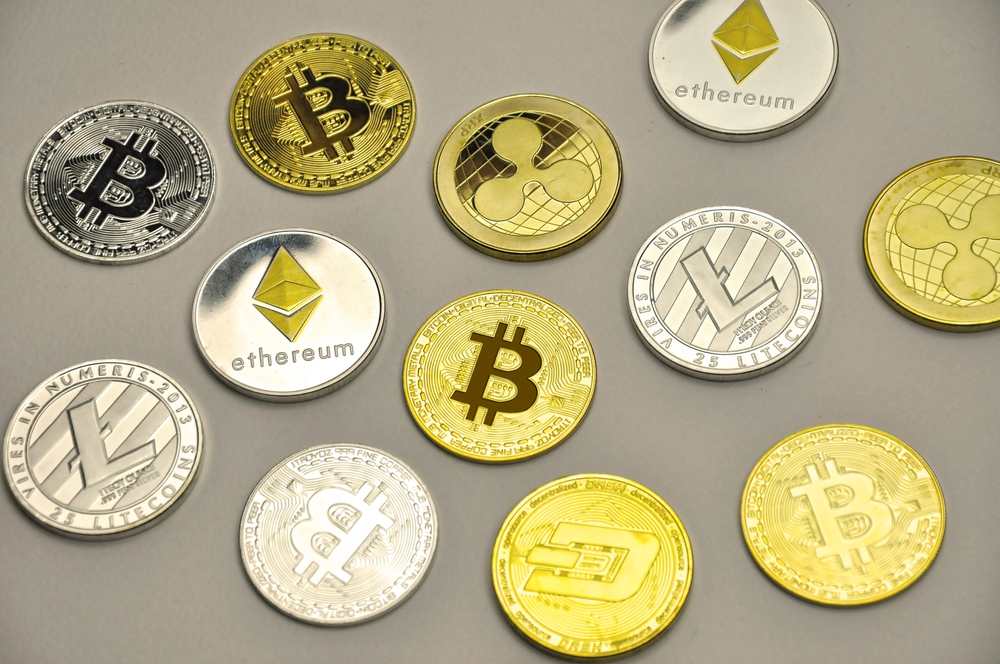Introduction
Blockchain networks are digital ledgers that are considered one of the most secure methods of performing online transactions. Blockchains were created to find a safe and hack-proof digital transaction method.
Therefore, governments have started to open up to the potential of blockchain technology for international payments and other uses. However, blockchains have to undergo many upgrades and changes to become threat free, and 100% protected networks. This article is going to shed light on soft forks and how they help in improving the network.
What is Blockchain Protocol?
Let us take a deconstructive approach to understanding soft forks such that we shall start learning about the fundamental concepts that lead up to soft forks to understand this phenomenon in the best possible light.
Blockchain is a distributed ledger that operates in a decentralized manner. It means that on-chain data that is stored on the blockchain network is not saved on servers like typical software. Blockchain is present in the form of nodes or custodians, that is, computers and other digital devices that contain a copy of blockchain at all times.
These nodes follow the current protocols or set of rules that are levied by a blockchain network. These rules allow the nodes to make different decisions about the blockchain and understand the set of services that they can avail from this network.
What is a Fork?
Anyone who is a member of the online crypto community must have noticed mentions of terms such as forks. Whenever forks have mentioned, the stakeholders of the community can get particularly excited and active.
As mentioned before, protocols are blockchain rules that the nodes and miners must follow to interact with the network. Forks are the upgrades that are introduced to make changes or make improvements in a given blockchain project.
Forks are not like typical updates that happen on a private server for a traditional application or database. Blockchains are distributed in the form of nodes or copies across the globe. It is not possible to implement a new upgrade at once. Therefore, when a new fork or update is introduced, it requires the individual nodes and miners to comply.
As a result, blockchains can split into different pieces when new forks are introduced. To remedy this issue, forks ensure that the divided versions of blockchains reach a similar block height so that validators have to pick the most authentic block for verification and to carry forward. There are two main types of forks given as under:
Hard Fork
A hard fork takes place when all the stakeholders on a blockchain cannot proceed without accepting the latest upgrade. Therefore, when this type of fork is implemented, it requires a 100% consensus among the nodes and miners on the network. Hard forks ensure that the previous versions of nodes are discarded or branched out in an independent fork.
Soft Fork
Soft forks are another type of upgrading mechanism that is used on blockchain networks. This is a less stringent and more flexible version of updating protocols on a blockchain. Soft forks allow the nodes to adhere to the old protocols in addition to adopting the new rules.
At the same time, they do not require a unanimous consensus among the stakeholders to implement them.
Advantages of Forks
Here are some of the most important and noteworthy benefits of introducing a fork on a blockchain protocol:
Security Measures
Blockchain is considered to be one of the most secure and threat-averse forms of digital payment networks. However, hackers are always looking for ways to intercept a DeFi network and find exploits in a blockchain so that they can manipulate them to their will.
Therefore, blockchain devs attempt to stay one step ahead of the hackers, and they are determined to find any possible bugs or vulnerabilities that hackers may exploit. Forks are introduced as a way to patch any blind spots or repair security risks.
Therefore, forks are necessary to keep upgrading the security potential of a blockchain network against new types of threats and malware.
Network Efficiency
Blockchains expand as time passes since new decentralized applications, layer-2 solutions, and users are added to the network. Therefore, blockchains need to improve their scalability and interoperability measures using forks.
If the blockchain does not have enough forks, it may fall behind in terms of performance and efficiency and experience technical issues such as slowed pace of transactions. Forks ensure that blockchains can keep expanding in proportion to the increase in the trading volume and support online traffic without getting congested or suffering from temporary outages.
Innovation
Bitcoin blockchain was introduced as an open-sourced project. Therefore, several other blockchain developers were able to use the core code of the Bitcoin network and create new blockchain projects. However, programmers have not only copied the Bitcoin core but have also introduced new features and innovations in their latest blockchain projects.
Keeping this in mind, blockchains are used as forks to introduce a new feature and leave behind the technical issues that their users have faced in the past. Blockchains have introduced unique products and services such as staking, reflection tokens, flash loans, yield farming, and others.
Transaction Reversal
Forks are an effective way to recover lost funds that can reverse the damage done by a hack attack. They may also retrieve funds that are created as a result of fake transaction activities and consolidate the ledger to secure the most accurate on-chain records.
What is a Soft Fork?
As mentioned before, soft forks are a type of upgrade on a blockchain network that is often less harsh and strict in comparison to other methods. Soft forks are also known as backward-compatible updates. It means that the nodes on a blockchain network will keep recognizing and interacting with the non-upgraded blocks and transactions after a soft fork.
Therefore, when a soft fork is implemented, the blockchain nodes and miners can keep interacting with the network without upgrading to the latest version for a while.
Soft forks do not divide the blockchain network into two separate branches. When Soft forks are on-boarded on the mainnet, they continue to recognize the old rules and, at the same time, continue with the amended protocols.
In this manner, the nodes on the network have more time to get familiar with the latest changes and gradually adapt them accordingly. Soft forks introduce miners to the new fork using Pay-to-Anybody transactions. These transactions appear to the old clients and miners to convince them to reject the old transaction and blocks.
How do Soft Forks Work?
The first step towards the implementation of a fork on the blockchain is the creation and acceptance of the proposal. Soft fork proposals can start implementation without needing a unanimous consensus from the blockchain stakeholders.
As long as a majority of the nodes or miners agree to accept the new soft fork, they can start implementing it. However, in most cases, soft forks require more than 50% of favorable votes to get approved.
Once the Soft fork has reached a sizeable majority, it can enter into the implementation phase. During this phase, miners can run the latest clients that recognize the new soft fork. As more miners start to become compliant with the new soft fork, the blockchain can become more secure.
In most cases, ¼ of the miners are unlikely to become aware of or adopt the new soft fork. However, these old nodes are still going to remain validated on the blockchain as they are recognized by the old clients. However, as long as they are impervious to the new rules, they will not be added to the new nodes.
Soft forks do not require making any major changes in the core structure of a blockchain program. Soft forks can only be reversed by hard forks that consolidate the most accurate version of all soft fork subsets together.
Origin of Soft Fork
The first soft fork was recorded on the first-ever blockchain network known as Bitcoin. When Bitcoin was introduced, this network did not specify a block size. Block size is the amount of transaction data that a single block can contain.
However, once the blockchain was introduced and started its public run, Bitcoin creator Satoshi Nakamoto created Bitcoin and later introduced a block size to the network using a soft fork.
This soft fork is known as the SegWit or Segregated Witness update. It was implemented on Bitcoin in 2017. On account of its nascent nature, SegWit is considered one of the most popular soft fork events in the DeFi sector.
SegWit was introduced as a soft fork. However, there was an unsettled dispute between the Bitcoin stakeholders regarding the most suitable block size. Therefore, SegWit later turned into a hard fork to settle the matter at once.
The finalization of the SegWit hard fork resulted in the creation of a new Bitcoin-related cryptocurrency, which is known as Bitcoin Cash. The soft forks prevent the dangers of a 51% attack because the miners and nodes that are still adhering to the old clients are also recognized on the blockchain in addition to the new version.
Following the introduction of a hard fork, the blockchain may issue a new cryptocurrency that may be distinct from the original coins that belonged to the genesis blockchain. Meanwhile, soft forks usually do not result in the issuance of a forked crypto token.
Types of Soft Forks
When learning about soft forks, it is important to note that soft forks are not based on a particular formula. They can be implemented on the blockchain on account of various reasons and under a wide array of circumstances. Based on their origins, there are the following types of soft forks:
UASF
USAF stands for User-Activated Soft Forks. As visible from the title, these blockchains are initiated by the nodes that are associated with a blockchain network. The nodes of a blockchain can collaborate to adopt a new version or a new set of rules regarding governance that does not require support from the miners.
MASF
Miners-Activated Soft Forks are implemented by the association and consensus among the miners of a blockchain network. MASFs take place when most of the miners are shifting to a new consensus mechanism or upgrading the existing mechanism.
Miners may also implement these soft forks by adopting new software or hardware equipment for mining, such as updating to ASIC farming machines etc.
Divergence
Some soft forks can happen on account of organic and unplanned changes taking place on a blockchain network. When a blockchain undergoes divergence due to a sizeable portion of stakeholders sticking with the older versions, these unintentional soft forks can take place.
They are the product of a new agreement stemming from majority infringement of the latest update.
Comparison Between Hard Fork and Soft Fork
Here are some of the most noteworthy and crucial differences between Hard and Soft Forks:
Protocol Upgrades
Hard and Soft forks are not entirely different from each other. They are two sides of the same coin. As mentioned before, both hard and soft forks are created as a way to update the existing blockchain network. Blockchains are also software, but they are not hosted on a private consolidated server.
Blockchains are present in the form of nodes that are dispersed around the globe. Therefore, they cannot implement updates like a typical software version. Therefore, the devs publish hard and soft forks. It is worth mentioning that forks are distinct from branching because forked blockchains are independent software.
Blockchain Division
When a fork is introduced, it affects the genesis blockchain or the core blockchain network. When the soft fork is introduced, the DeFi ecosystem does not divide into two branches. Rather the soft forks make sure that the blockchains can retain both new and old nodes without splitting into parts.
On the other hand, when a hard fork is implemented, the blockchain is very likely to split into two distinct parts as the new nodes in the hard fork do not recognize the old clients generated transactions and blocks.
Forked Cryptocurrency
When hard forks take place, they break a blockchain into two or more parts. The users on the network can choose to keep using both versions or discard one option. At the same time, the division of a blockchain leads to the creation of two distinct cryptocurrencies, one that hails from the original blockchain and the second that is created as a forked token.
However, when a soft fork takes place, the blockchain does not need to break into parts. At the same time, the blockchain users can keep using the same native cryptocurrencies that are associated with the mainnet of the blockchain project in question.
Network Participation
To ensure a hard fork, all the stakeholders that are responsible for implementing it must reach a consensus and ensure continuous participation. Soft forks are rather easygoing. They give considerable time to all the stakeholders on the network to learn about the new changes and undergo a slow and gradual upgrade.
Meanwhile, the participation rate in hardfork is never fractional or fragmented like soft forks.
Implementation
To implement hard forks, the blockchain requires a 100% consensus from its key stakeholders, such as miners or node validators. If all the participants of the blockchain do not agree, the network cannot implement the hard fork.
However, when it comes to the soft fork proposals, the stakeholders do not need a lump sum agreement. If the key stakeholders agree to the new proposals, the miners or the node validators can implement them by cooperating through online forums and correspondence.
Computation Power
Soft forks are reported to require a considerably larger amount of computation power in comparison to hard forks. Therefore, soft forks can open blockchain networks to the threat of exploits and hack attacks. The hackers can take advantage of the technical vulnerabilities that stem from the acceptance of new blockchain protocols without discarding the old ones.
On the other hand, hard forks are considered much more secure than soft forks since all the nodes and miners upgrade at once. At the same time, they do not need computation power as high as soft forks.
Community Consensus
Hard forks leave little room for dispute and disagreement within a blockchain community. Hard forks are only implemented if the stakeholders have approved the proposal with a unanimous majority. Therefore, hard forks are already accepted and expected by all community members before their implementation.
On the contrary, soft forks can lead to a possibility of conflict and clash of opinions between the users. Even when the nodes and miners agree about the need for the latest soft fork, they may suffer from disagreements concerning the most suitable parameters for these changes.
Conclusion
Soft forks are a great way to implement new changes and add new features to a blockchain network. They carry both benefits and setbacks on account of their intrinsic nature. It depends on the nature and requirement of a current blockchain network if soft forks are suitable for them or not.
By learning about the learning dynamics of a soft fork, cryptocurrency investors can make better trading decisions and also understand the market dynamics through an educated lens.











